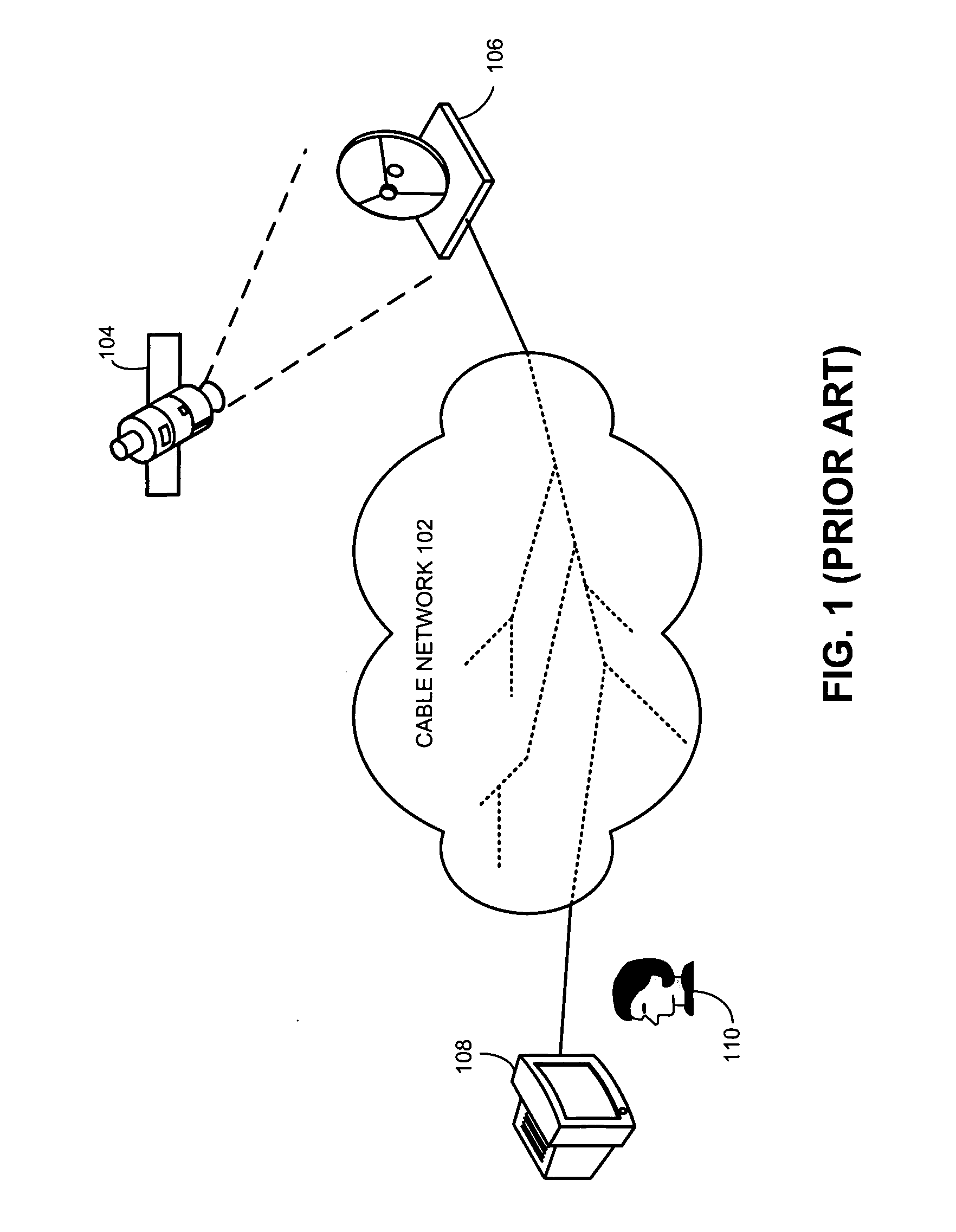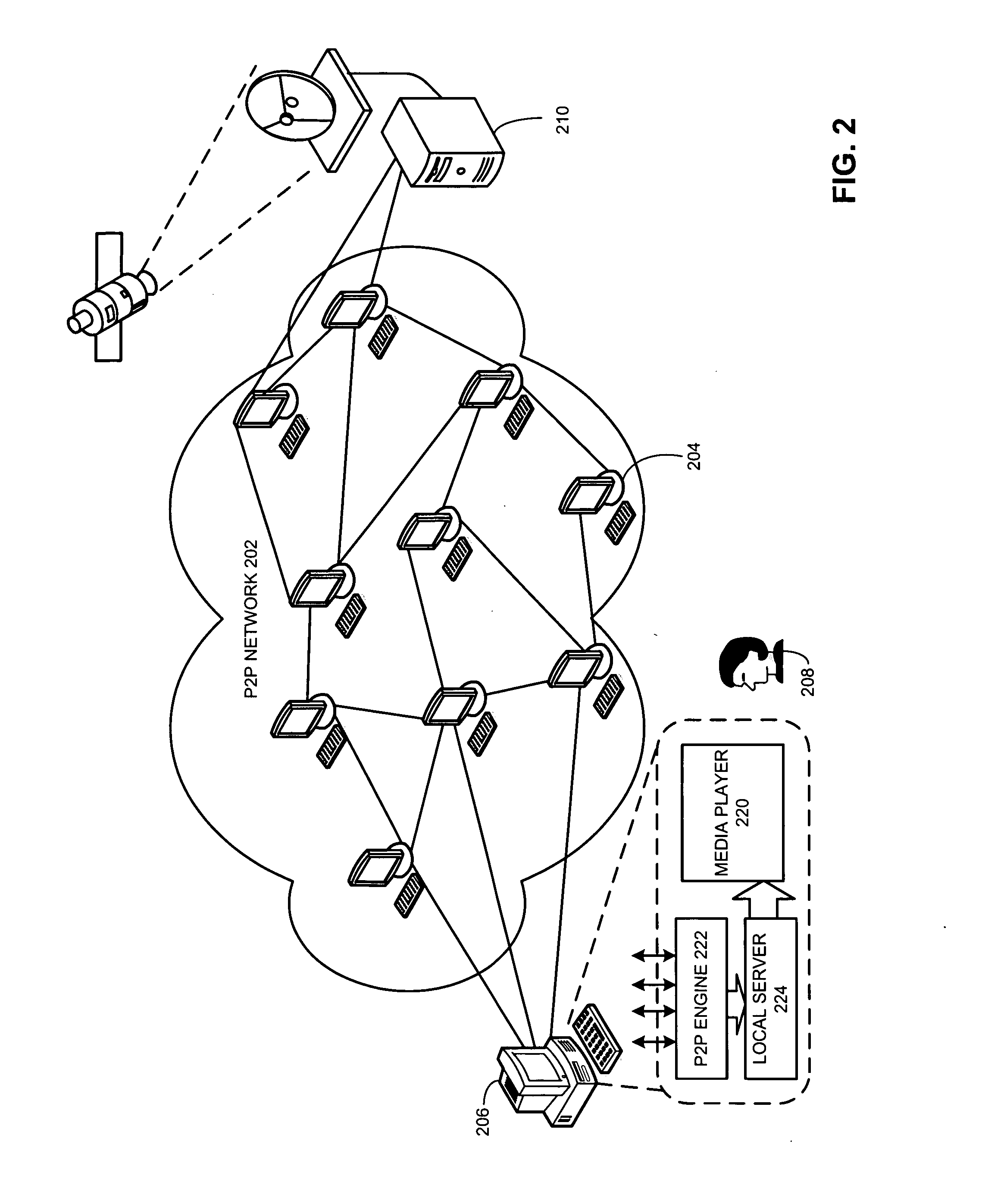System and method for presenting streaming media content
a streaming media and content technology, applied in the field of streaming media content delivery systems, can solve the problems of not being able to enjoy high-bandwidth audio or video content over broadband networks, unable to provide effective delivery of bandwidth-intensive multi-media content to end-users, and video is one of the most bandwidth-intensive forms of on-line content, etc., to facilitate user-initiated control over the presentation of streaming media content. , the effect of facilitating interactive presentation
- Summary
- Abstract
- Description
- Claims
- Application Information
AI Technical Summary
Benefits of technology
Problems solved by technology
Method used
Image
Examples
Embodiment Construction
Delivery of TV Signals over Cable Programming Networks
[0021]FIG. 1 illustrates a prior art conventional cable programming network 102 for delivering TV signals to end-users. The head-end of a cable programming network 102 is in communication with a satellite base station 106. Base station 106 receives signals for several TV channels relayed by a satellite 104. Base station 106 also encodes the received TV signals and transmits the signals onto the cable programming network 102.
[0022] Cable programming network 102 can be implemented over a conventional coaxial-cable network, or in a further embodiment, can be an optical-fiber network. At the user-end, the TV signals are typically carried by a copper coaxial cable that is routed to an end-user's residence or office. A TV set or receiver 108 receives the TV signals and presents the media content.
[0023] Cable networks are usually implemented in tree topologies to facilitate transmitting traffic downstream from the head-end to the ta...
PUM
 Login to View More
Login to View More Abstract
Description
Claims
Application Information
 Login to View More
Login to View More - R&D
- Intellectual Property
- Life Sciences
- Materials
- Tech Scout
- Unparalleled Data Quality
- Higher Quality Content
- 60% Fewer Hallucinations
Browse by: Latest US Patents, China's latest patents, Technical Efficacy Thesaurus, Application Domain, Technology Topic, Popular Technical Reports.
© 2025 PatSnap. All rights reserved.Legal|Privacy policy|Modern Slavery Act Transparency Statement|Sitemap|About US| Contact US: help@patsnap.com



